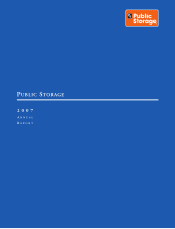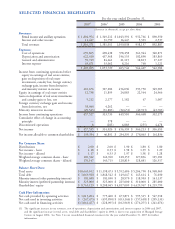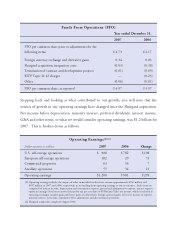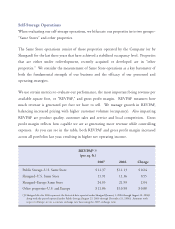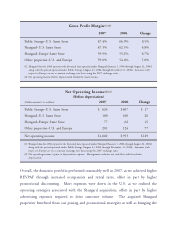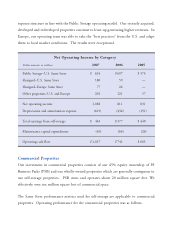Public Storage 2007 Annual Report Download - page 11
Download and view the complete annual report
Please find page 11 of the 2007 Public Storage annual report below. You can navigate through the pages in the report by either clicking on the pages listed below, or by using the keyword search tool below to find specific information within the annual report.investor interest in partnering with us in Europe is strong, and we are working on a
transaction that would accomplish most of the objectives of the public offering. Our plan
is to retain a significant equity interest in Shurgard Europe and participate in this huge
growth opportunity.
Financial Policies
Owning real estate is a capital intensive business. When conducted within the structure
of a Real Estate Investment Trust (REIT), it is even more capital intensive, as there is little
ability to retain earnings.
There are four ways to finance the Company’s growth: debt, preferred stock, common
equity and retained earnings. Most REITs utilize 40% to 50% debt in their capital
structures and retain a de minimus amount of earnings. The average amount of retained
cash after recurring maintenance capital is about 7% 3of free cash flow. In 2007, we
retained 53%. Accordingly, for most REITs, acquiring additional real estate necessitates
the need for additional leverage and issuance of additional common equity (which dilutes
current owners’ interest).
We have chosen a different path, using preferred stock and retained earnings (net operating
cash flow). Preferred stock is similar to debt for us, except that it is perpetual (never has
to be repaid, unlike debt), can be redeemed after five years if we choose (if the coupon
rate is better) and has no financial covenants (unlike debt, which has many). So we get
the benefits of leverage without the attendant risks associated with debt.
We have worked hard to maximize retained earnings through careful tax planning and
structuring transactions to maximize tax depreciation. The Shurgard acquisition was
particularly advantageous, as it was a taxable acquisition and produced over $4 billion of
depreciable assets plus it allowed us to retain an existing net operating loss carryforward
of over $350 million in Europe.
3. “Real Estate Securities Monthly,” Green Street Advisors, February 1, 2008, p. 16.

